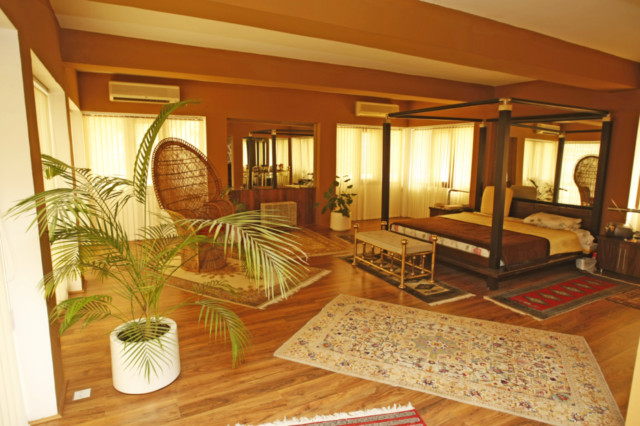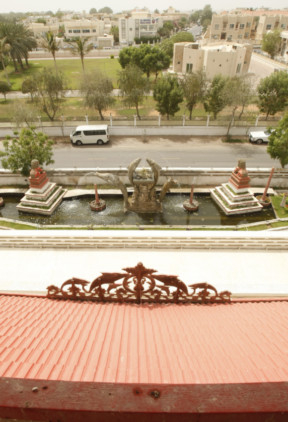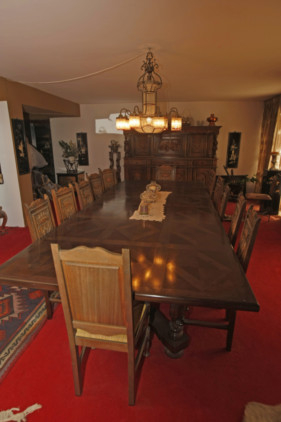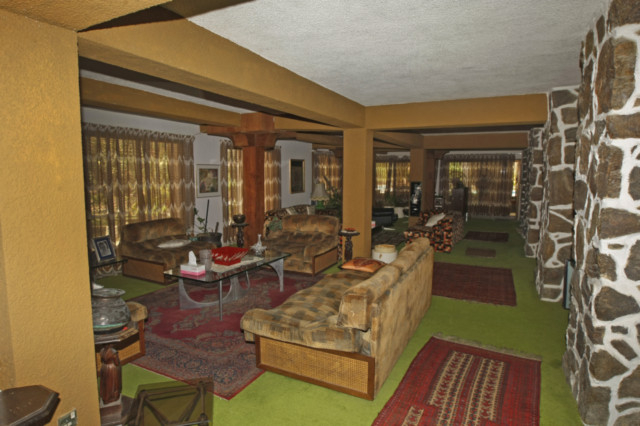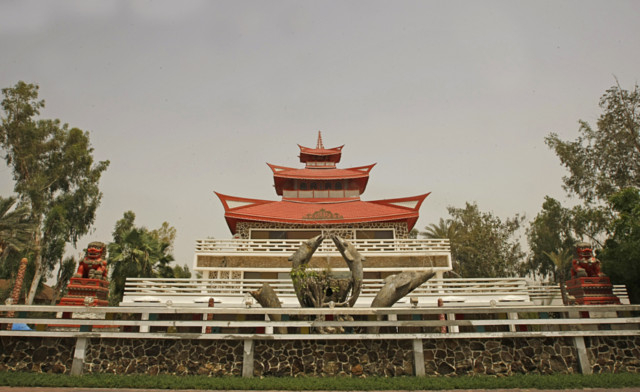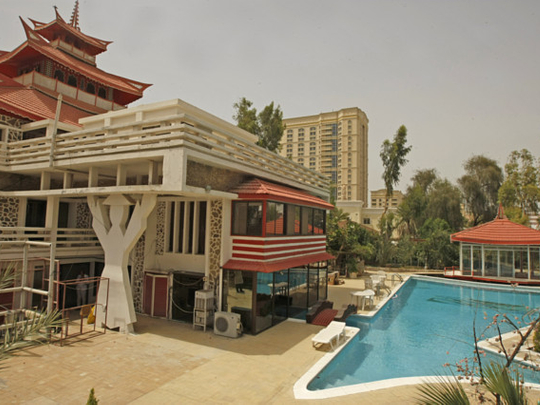
DUBAI: An old pagoda house is one of Dubai’s curious landmarks. Neighbours in the Al Sikka district refer to it as the “Chinese house” while some use it as a point of reference when giving directions.
If you miss this pagoda-looking structure while driving on Al Wasl Road, it’s because the view is partly obstructed by boutique villas bang opposite Mousa Medical Centre.
This house (whose unusual shape shows even on Google Map) is the nest of an old Arab couple who apparently liked things Chinese or Japanese in their salad days.
XPRESS had an exclusive tour of this fascinating villa, guided by the man of the house himself, Zakaria Ebrahim Khalel Doleh, an 86-year-old Emirati.
“I started building it in 1965,” recalls the patriarch who has three grown-up children and six grandchildren. “I initially wanted to build a bungalow so I obtained a licence specifically for it. I figured I’d want a moving house so that when land prices got better I’d sell the land and move the house elsewhere.”
He changed his mind and built a “bungalow set on pillars” instead. It was in 1980, after looking at many design ideas, he finally gave the house its pagoda look. “The photos and movies I saw about China, Japan – the Far East – inspired me. But it wasn’t until I travelled to Thailand that I realised the design I came up with for the house was not Japanese as I had previously thought, it was Indochinese.”
He also built three swimming pools but knocked out two. “I like the one we have right now. It’s got 86,000 gallons of water at the moment and a part of it is inside the house.”
Two vintage 1927 Mercs sit covered in the villa’s sprawling car port. Two red dragon statues adorn each side of the 44,000 square foot (4,088 square metre) compound surrounded by towering eucalyptus trees.
Awestruck
The house draws awe from people who stray into this quiet district. Marilyn, one of the Doleh’s two Filipina housemaids, said: “We’re used to people stopping by to take pictures of the house.”
Minie, an Indian neighbour, said: “People there seem nice. But they tend to keep to themselves.”
The compound on which the house stands used to be bigger. “I sold half of it and the other half I used to build my house and 60 other villas that I rent out.”
Inside, the old house is in perfect shape. Walking through it, and given the huge number of antiques in it, one cannot help but feel it is like walking into a museum.
It is in a constant state of change. Doleh recently turned a balcony into a bedroom on the first floor.
But why did the house have to stand out so much?
“Why not be different?” said Doleh. “I like the fact that my house stands out. It used to be a sailors’ landmark, you know. They used my house as a landmark back in the day. Who wouldn’t like that?”
The ground floor has an apartment for guests, with a bedroom and ensuite bath. There’s a library, a huge living room, a kitchen and a small living room with part of the swimming pool extending into the core house.
“Having part of the swimming pool inside helps in the summer, especially when the weather is particularly hot.”
The first floor has a huge living room with three bedrooms, each with an en-suite bath. The second floor has two bedrooms and one living area.
There is a ladder (that can be pulled down) to reach the top of the pagoda from where one gets a much better view of the surroundings. As of now the two levels of pagodas are unoccupied.
The house has been the love nest of Doleh and his wife, Wedad Huda Azhari, whom he married in 1967.
“We have three beautiful kids – two boys and a girl. They’re all grown up now, married and fully independent.
“I’m originally Jordanian, while my wife came from Syria. However, my entire family carries Emirati passports,” said Doleh. Azhari, 77, who suffers from Alzheimer’s, was Dubai’s first female lawyer and was a former member of parliament of the United Arab Republic (Union between Egypt and Syria) in the ’60s.
Except for the broken dolphin sculpture in front of the house, the pagoda is perfectly preserved, although Doleh has been constantly making changes to it. “I won’t stop renovating it for as long as I can,” he said.


